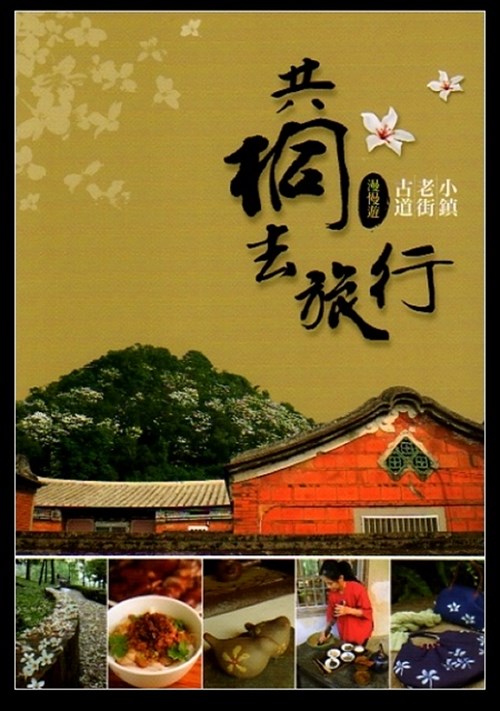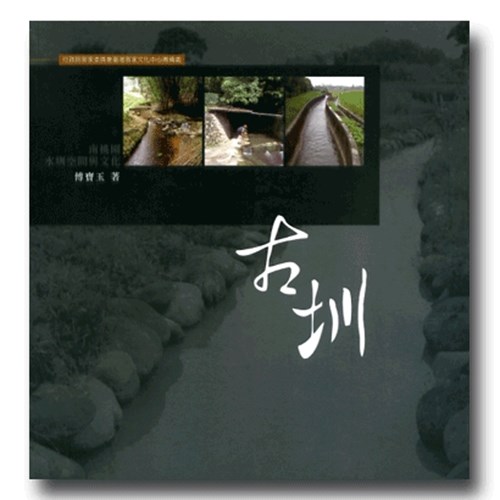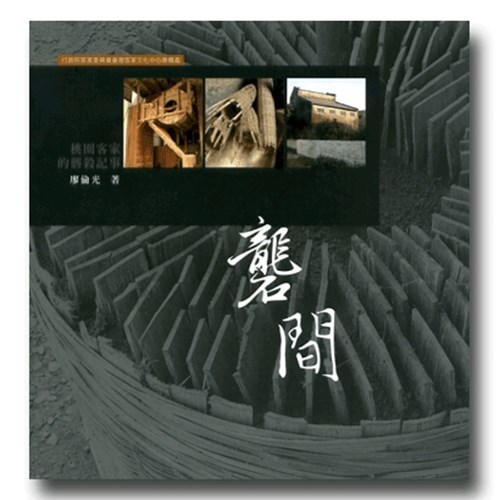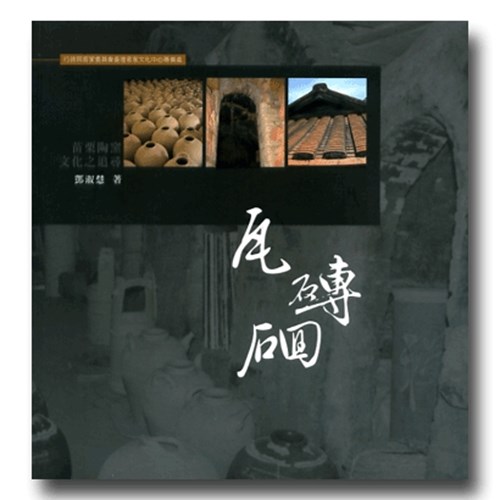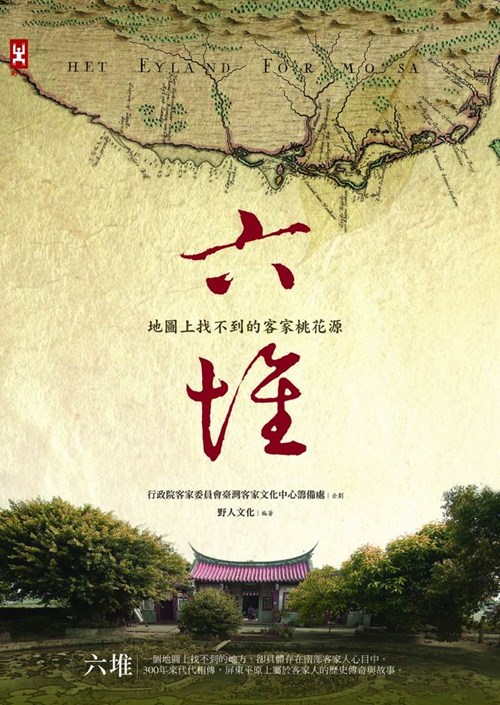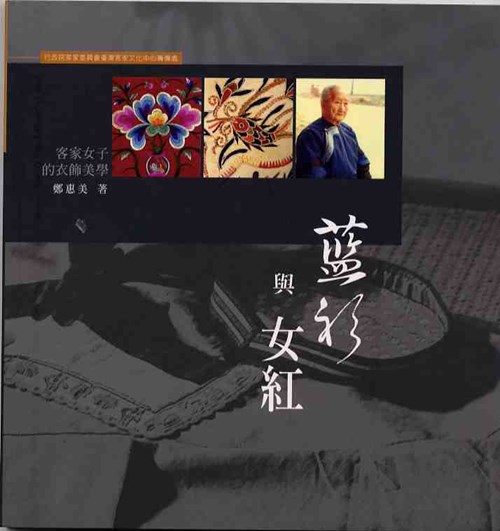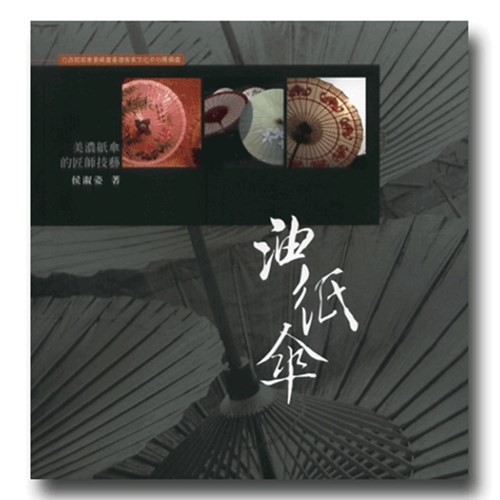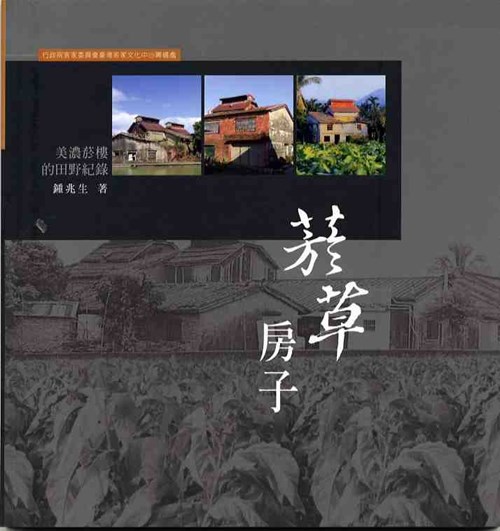
Research & Library
Publications

-
![]()
Catalogue of Hakka Cultural Artifacts
Publication Date:Author: Lin, Jiuan-jiuanPublication Date: April 2009This catalogue compiles the collections of nine Hakka cultural museums across Taiwan whose artifact databases are among the most complete to date. It systematically classifies and registers a wide range of Hakka cultural objects—including household utensils, farming tools, musical instruments, documents, and more. Each entry is accompanied by a photograph, item name, catalog number, dimensions, materials, and description of function, providing a clear and comprehensive record of Taiwan’s preserved Hakka cultural heritage.
-
![]()
Traveling along with the Tung Blossoms
Publication Date:Editor: Sunkids Publishing Company Ltd., Editorial Department.Publication Date: April 2009A promotional publication for the 2009 Hakka Tung Blossom Festival, commissioned by the Council for Hakka Affairs.Every year from late spring to early summer, the white tung blossoms, as pure as falling snow, bloom across the Hakka mountain villages of central and northern Taiwan, bringing a sense of romance to the landscape. Yet beyond the blossom season, these charming Hakka towns are worth visiting year-round—whether it’s the nostalgic, old market of Xinpu (新埔) filled with the sounds of people speaking Hakka, the Oriental Beauty tea cultivated on the rolling hills of Beipu (北埔) and Emei (峨眉), the fragrance of grass jelly in Guanxi (關西), or the salty-smelled Fu-chai (made from salt leaf mustard's leaf) of Gongguan (公館). Each small town offers its own distinct character and warmth, waiting to welcome visitors.The book features ten thematic travel routes, showcasing the most captivating tung blossom trails, Hakka villages, and historic small towns. Through themes such as eco-trails, historic paths, traditional Hakka cuisine, artisanal industries, and vernacular architecture, it weaves together the natural splendor of the tung blossom season with the rich cultural heritage of the Hakka people—inviting readers to experience a journey where nature and culture bloom together.
-
![]()
Reading Liugdui from the Bird’s-Eye View
Publication Date:Authors: Zeng, Zhao-xiong and Shih, Ya-hsuanPublication Date: February 2008This work presents the landscape of Liugdui through a collection of aerial photographs, accompanied by interpretive texts on its geography, history, and cultural heritage. The Liugdui region in Kaohsiung and Pingtung is one of the earliest Hakka settlement areas in Taiwan and still preserves many traditional features that distinguish it from the Hakka communities of northern Taiwan.Scattered like constellations across the foothill plains of southern Taiwan, the Liugdui villages each possess their own stories, patterns, and cultural identities, expressed through distinct architectural forms, local industries, and shared Hakka traditions. Viewing these settlements from above offers a fresh perspective, which beyond conventional linguistic or cultural analyses, revealing, in the most direct and striking way, the beauty and vitality of Hakka settlement landscapes. Whether it is the tobacco-curing barns, communal dwellings, ancestral halls, walled courtyard houses, or specialized industries, each scene provides valuable insight into the deeper layers of Hakka cultural life.
-
![]()
Hakka Living Museum Series, Vol. 6 – The Ancient Irrigation Canals
Publication Date:Author: Fu Bao-yuPublication Date: October 2007The Hakka Living Museum Series is a collection of works based on extensive field investigations and ethnographic documentation of Hakka culture. Initiated by the Preparatory Office of the Taiwan Hakka Cultural Center, Council for Hakka Affairs, Executive Yuan, this series aims to preserve and promote Hakka heritage by selecting themes that resonate with the general public. Topics include familiar aspects of daily life such as “Blue Garments,” “Oil-Paper Umbrellas,” and “Pottery Kilns” (representing Hakka crafts), as well as “Tobacco Curing Barn,” “Rice Milling Workshop,” and “Irrigation Canals” (representing industrial and agricultural heritage sites). Prior to the construction of the Taoyuan Main Canal (1916) and the Shimen Main Canal (1956), Hakka settlers on the Taoyuan tableland had already developed a sophisticated traditional irrigation system. The historic canal routes, along with the stories and legends surrounding their creation, not only record the unique process of land reclamation in southern Taoyuan but also reflect the social organization, communal cooperation, and cultural customs of the Hakka people.
-
![]()
Hakka Living Museum Series, Vol. 5 – Rice Milling Workshop
Publication Date:Author: Liao, Lun-kuangPublication Date: October 2007The Hakka Living Museum Series is a collection of works based on extensive field investigations and ethnographic documentation of Hakka culture. Initiated by the Preparatory Office of the Taiwan Hakka Cultural Center, Council for Hakka Affairs, Executive Yuan, this series aims to preserve and promote Hakka heritage by selecting themes that resonate with the general public. Topics include familiar aspects of daily life such as “Blue Garments,” “Oil-Paper Umbrellas,” and “Pottery Kilns” (representing Hakka crafts), as well as “Tobacco Curing Barn,” “Rice Milling Workshop,” and “Irrigation Canals” (representing industrial and agricultural heritage sites). Drawing on field research conducted in Longtan, Xinwu, and Pingzhen in Taoyuan, the author documents and analyzes the architectural characteristics of twenty-six Hakka rice milling workshops. This study illustrates how these spaces served multiple roles—as places for rice dehusking, storage sites for harvested grain, and even informal lending venues for farmers in times of hardship. This work also introduces the rich body of Hakka proverbs, poems, and customs related to rice milling culture, offering readers a vivid glimpse into the daily lives and values of the Hakka farming communities.
-
![]()
Hakka Living Museum Series, Vol. 4 – Tile, Bricks, and Ceramics
Publication Date:Author: Deng, Shu-huiPublication Date: October 2007The Hakka Living Museum Series is a collection of works based on extensive field investigations and ethnographic documentation of Hakka culture. Initiated by the Preparatory Office of the Taiwan Hakka Cultural Center, Council for Hakka Affairs, Executive Yuan, this series aims to preserve and promote Hakka heritage by selecting themes that resonate with the general public. Topics include familiar aspects of daily life such as “Blue Garments,” “Oil-Paper Umbrellas,” and “Pottery Kilns” (representing Hakka crafts), as well as “Tobacco Curing Barn,” “Rice Milling Workshop,” and “Irrigation Canals” (representing industrial and agricultural heritage sites). Tile and pottery production have long been vital industries in the Miaoli region. Drawing on years of fieldwork and documentation, the author traces the historical evolution and cultural context of local kiln traditions. In addition to illustrating the important role of Miaoli’s ancient kilns in the history of Taiwan’s ceramic development, the book also explores how locally produced tiles, bricks, and hui (硘, broadly meaning “ceramics”) express the distinctive qualities of Hakka life and the character of local industries.
-
![]()
The Hidden Hakka Arcadia — Liudui (Second Print)
Publication Date:Authors: Huang, Rui-fang, Zeng, Kun-yu, and Zeng, Zhao-xiongPublication Date: July 2007Liugdui, an undiscovered place on any map, yet lives vividly in the hearts of Hakka people in southern Taiwan, and also it is a historical legend and a living story that has been passed down along the Pingtung Plain by the Kaoping River for over three centuries.Liugdui is not in the name of the administrative districts but rather a symbol of unity and shared identity, representing the collective strength of Hakka communities in southern Taiwan. Liugdui refers to the Six Divisions, namely the Front Dui, Rear Dui, Left Dui, Right Dui, Central Dui, and Vanguard Dui, each representing one of the six historical divisions that together formed the Liugdui Hakka community. They correspond respectively to today’s Linluo and Changzhi (Front Dui); Neipu (Rear Dui); Jiadong and Xinpi (Left Dui); Meinong, Gaoshu, Jiaxian, Shanlin, and Liugui (Right Dui); Zhutan (Central Dui); and Wanluan (Vanguard Dui). In modern times, Liugdui has come to signify not only a Hakka homeland but also a shared cultural community that embraces all the peoples who live within it.What makes it so special? the main reason visitors should come is thatIn Meinong, one can leisurely ride a bicycle through a tranquil townscape imbued with rustic charm. In Jiadong, visitors can admire the grandeur of the Hsiao Family Residence and the Tai-ji Liang-yi Pond—the only surviving example of its kind in Taiwan—before the Yang Clan Ancestral Hall. In Neipu, one finds the Changli Temple, dedicated to Han Yu (768–824), the only shrine in Taiwan honoring the great Tang Confucian scholar. And in Wanluan, no visit is complete without savoring the region’s famed Wanluan Pork Knuckles, known for their chewy texture and rich flavor.This is the first comprehensive cultural travel guide to Liugdui, presenting the beauty of southern Taiwan’s Hakka world through rich historical and ethnographic insight. The book also includes a supplementary booklet, Themed Journeys through Liugdui, highlighting local cuisine, heritage, and attractions through a series of curated travel themes.
-
![]()
Hakka Living Museum Series, Vol. 1 – Hakka Blue Garments and Women’s Needlework
Publication Date:Author: Cheng, Hui-Mei Publication Date: December 2006 The Hakka Living Museum Series is a collection of works based on extensive field investigations and ethnographic documentation of Hakka culture. Initiated by the Preparatory Office of the Taiwan Hakka Cultural Center, Council for Hakka Affairs, Executive Yuan, this series aims to preserve and promote Hakka heritage by selecting themes that resonate with the general public. Topics include familiar aspects of daily life such as “Blue Garments,” “Oil-Paper Umbrellas,” and “Pottery Kilns” (representing Hakka crafts), as well as “Tobacco Curing Barn,” “Rice Milling Workshop,” and “Irrigation Canals” (representing industrial and agricultural heritage sites). Each volume invites scholars to reorganize and interpret their long-term field research, enriched with abundant photographic materials, in order to illuminate the living experiences and wisdom of the Hakka people. In this work, the author brings together unprecedented visual materials from public institutions and private collections in Taiwan, offering a comprehensive portrayal of the traditional Hakka woman’s blue garments and embroidered works—those prepared for everyday life, marriage, childbirth, and old age. It vividly reflects both the customs of Hakka daily life and the aesthetic sensibilities embodied in Hakka garments and needlework.
-
![]()
Hakka Living Museum Series, Vol. 3 – The Oil-Paper Umbrellas
Publication Date:Author: Hou, Lulu Shur-tzyPublication Date: December 2006The Hakka Living Museum Series is a collection of works based on extensive field investigations and ethnographic documentation of Hakka culture. Initiated by the Preparatory Office of the Taiwan Hakka Cultural Center, Council for Hakka Affairs, Executive Yuan, this series aims to preserve and promote Hakka heritage by selecting themes that resonate with the general public. Topics include familiar aspects of daily life such as “Blue Garments,” “Oil-Paper Umbrellas,” and “Pottery Kilns” (representing Hakka crafts), as well as “Tobacco Curing Barn,” “Rice Milling Workshop,” and “Irrigation Canals” (representing industrial and agricultural heritage sites). Each volume invites scholars to reorganize and interpret their long-term field research, enriched with abundant photographic materials, in order to illuminate the living experiences and wisdom of the Hakka people.In Hakka culture, the oil paper umbrellas, whose name (油紙 in Hakka pronunciation) sound similar to “having sons” (iuˇ ziiˋ,有子), symbolizes fertility and the wish for a prosperous family lineage. This work traces how the umbrella evolved from a practical everyday object into an art form. Through in-depth interviews with nine umbrella craftmasters from Meinong—each representing a vital link in the transmission of traditional skills—the author documents in detail the handmade techniques of oil paper umbrella craftsmanship, while also examining the historical development, current status quo, and future prospects of this unique cultural industry.
-
![]()
Hakka Living Museum Series, Vol. 2 – The Tobacco Curing Barn
Publication Date:Author: Jhong, Jhao-ShengPublication Date: December 2006The Hakka Living Museum Series is a collection of works based on extensive field investigations and ethnographic documentation of Hakka culture. Initiated by the Preparatory Office of the Taiwan Hakka Cultural Center, Council for Hakka Affairs, Executive Yuan, this series aims to preserve and promote Hakka heritage by selecting themes that resonate with the general public. Topics include familiar aspects of daily life such as “Blue Garments,” “Oil-Paper Umbrellas,” and “Pottery Kilns” (representing Hakka crafts), as well as “Tobacco Curing Barn,” “Rice Milling Workshop,” and “Irrigation Canals” (representing industrial and agricultural heritage sites). Each volume invites scholars to reorganize and interpret their long-term field research, enriched with abundant photographic materials, in order to illuminate the living experiences and wisdom of the Hakka people.This volume focuses on the once-flourishing tobacco industry of Meinong, where more than 400 tobacco curing barns once stood across the landscape. Through on-site research and photographic documentation, the author explores the architectural spaces of these barns, their transformation amid social change, and their significance as repositories of Hakka cultural memory. The book further proposes approaches for heritage preservation and adaptive revitalization of these historically valuable structures.


